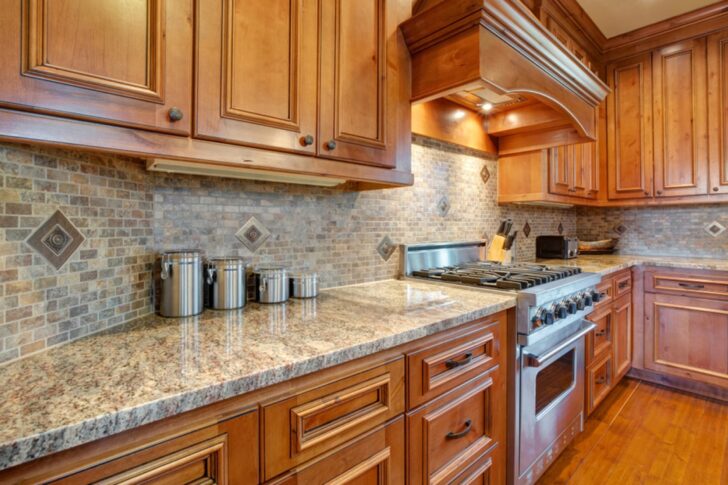For homeowners and prospective buyers alike, the question of “how much is this house worth?” is paramount. In the dynamic and often complex real estate market of the USA, determining a property’s value involves a confluence of factors, from broad economic trends to the unique characteristics of a specific dwelling. Understanding these elements is crucial for making informed decisions, whether you’re looking to sell, buy, refinance, or simply gauge your investment’s health.

This article delves into the multifaceted world of house worth in the USA, exploring the key determinants and providing illustrative cost tables to illuminate the landscape of property valuation.
The Pillars of Property Value: Key Factors at Play
A home’s worth in the USA isn’t a static figure; it’s a fluid value influenced by a range of interconnected factors. These can be broadly categorized as:
- Location, Location, Location: The adage holds true. A property’s location is arguably the most significant determinant of its value. This encompasses not just the city and state but also the neighborhood, school district quality, proximity to amenities (parks, shopping, transportation), crime rates, and even the desirability of the street itself. Homes in highly sought-after areas with strong schools and convenient access command a premium.
- Property Characteristics: The physical attributes of the house itself play a vital role. This includes the square footage, number of bedrooms and bathrooms, lot size, age, condition (including any recent renovations or necessary repairs), architectural style, and the presence of desirable features like a garage, yard, or basement.
- Comparable Sales (Comps): Real estate professionals heavily rely on recent sales data of similar properties in the same neighborhood to estimate a home’s market value. These “comps” provide a tangible benchmark, adjusted for differences in size, condition, and features.
- Market Conditions: The overall health of the local and national real estate market significantly impacts house worth. Factors like supply and demand, interest rates, economic growth, and consumer confidence all play a role. A seller’s market (low inventory, high demand) typically drives prices up, while a buyer’s market (high inventory, low demand) can lead to price stagnation or even decline.
- Economic Factors: The broader economic climate influences affordability and demand. Factors such as employment rates, wage growth, inflation, and interest rates directly affect buyers’ ability to purchase homes and thus impact property values.
- Demographic Trends: Population growth, migration patterns, age demographics, and household formation within a region can influence housing demand and, consequently, home values. Areas experiencing population growth often see increased demand and higher prices.
- Government Policies: Local and federal government policies, including tax incentives for homebuyers, zoning regulations, and housing subsidies, can also impact the housing market and property values.
- Property Condition and Improvements: A well-maintained home in excellent condition will generally be worth more than a similar property needing significant repairs. Recent, high-quality renovations and upgrades (e.g., updated kitchens and bathrooms, new roofing, energy-efficient improvements) can also increase a home’s value.
Navigating the Numbers: Understanding House Worth Through Cost Tables
While a precise valuation requires a professional appraisal or a comparative market analysis (CMA) from a real estate agent, understanding general cost trends can provide valuable insights. The following tables offer a simplified overview of factors influencing house worth in the USA.
Table 1: Impact of Key Property Characteristics on Estimated House Value (Illustrative)
| Characteristic | Description | Estimated Value Impact (Compared to Base Property) |
|---|---|---|
| Location (Neighborhood) | Highly Desirable, Top-Rated Schools, Low Crime | +15% to +30% or more |
| Average Neighborhood, Good Amenities | Base Value | |
| Less Desirable, Higher Crime, Fewer Amenities | -10% to -20% | |
| Square Footage | Each Additional 500 sq ft (Usable Living Space) | +$50,000 to +$150,000+ (Varies by market) |
| Number of Bedrooms/Bathrooms | Additional Bedroom (Above 3) | +$10,000 to +$50,000+ (Varies by market) |
| Additional Full Bathroom (Above 2) | +$15,000 to +$60,000+ (Varies by market) | |
| Property Age & Condition | Newly Built (0-5 years) | +10% to +20% |
| Well-Maintained, Updated (10-20 years) | Base Value to +5% | |
| Older, Some Updates Needed (30+ years) | -5% to -15% (Potentially more with significant issues) | |
| Key Features | Garage (Attached, 2-Car) | +$10,000 to +$30,000+ (Varies by market) |
| Finished Basement | +$20,000 to +$75,000+ (Usable Space) | |
| Updated Kitchen (Granite, Stainless Steel) | +$15,000 to +$50,000+ (Depending on scale) | |
| Updated Bathrooms (Modern Fixtures, Tile) | +$10,000 to +$30,000+ (Per Bathroom) |
Export to Sheets
Note: These are highly generalized estimates and the actual impact of these characteristics on house worth can vary significantly based on the specific location, overall market conditions, and the quality of materials and workmanship.
Table 2: Impact of Market and Economic Factors on Estimated House Value (Illustrative)
| Factor | Description | Potential Impact on Overall Market Value |
|---|---|---|
| Seller’s Market | Low Inventory, High Buyer Demand, Multiple Offers Common | +5% to +15% or more |
| Buyer’s Market | High Inventory, Low Buyer Demand, Longer Selling Times | -5% to -10% or more |
| Low Interest Rates | Makes Mortgages More Affordable, Increased Buyer Pool | Potential Upward Pressure on Prices |
| High Interest Rates | Increases Borrowing Costs, Decreases Buyer Affordability | Potential Downward Pressure on Prices |
| Strong Economic Growth | Higher Employment, Increased Consumer Confidence | Potential Upward Pressure on Prices |
| Economic Recession | Job Losses, Reduced Consumer Confidence | Potential Downward Pressure on Prices |
| High Population Growth (Local) | Increased Demand for Housing | Potential Upward Pressure on Prices |
| Deteriorating Local Economy | Job Losses, Out-Migration | Potential Downward Pressure on Prices |
Export to Sheets
Note: These are illustrative examples of how broader market and economic conditions can influence overall house values. The actual impact can vary depending on the specific region and the severity of the conditions.
Determining Your Home’s Worth: Available Resources
For a more accurate assessment of a specific property’s worth in the USA, several resources are available:
Reviewing Local Market Data: Staying informed about local real estate market trends, such as median sale prices, inventory levels, and days on market, can provide a general understanding of how property values are trending in your area.
Online Home Value Estimators: Websites like Zillow, Redfin, and Realtor.com offer automated valuation models (AVMs) that provide an estimated market value based on publicly available data and algorithms. While convenient, these estimates should be considered a starting point and may not always reflect the true market value.
Comparative Market Analysis (CMA): A real estate agent can provide a CMA, which involves analyzing recent sales of comparable properties in your area and adjusting for your home’s specific features and condition. This is a more personalized and often more accurate estimate than an AVM.
Professional Appraisal: A licensed real estate appraiser conducts a thorough on-site evaluation of the property, considering its condition, features, location, and recent comparable sales to determine its fair market value. An appraisal is typically required by lenders during the mortgage process.











